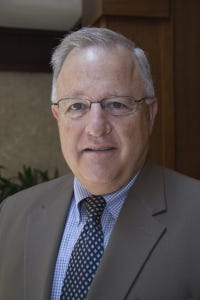Collected Thoughts: Fuel for the Future
Should waste-to-energy (WTE) be considered a source of renewable energy on a par with wind, solar and hydropower?
July 1, 2011
Guest Commentary by Harvey Gershman, president of Gershman, Brickner & Bratton Inc.
Should waste-to-energy (WTE) be considered a source of renewable energy on a par with wind, solar and hydropower? This question was recently put to Maryland Governor Martin O’Malley after both the Maryland House of Delegates and Senate passed a bill elevating WTE to a Tier 1 renewable under the state’s renewable portfolio standard. Over the objections of environmental groups, O’Malley signed the bill in May, saying he believes WTE is superior to landfilling and is fully compatible with recycling. The governor is absolutely right!
 Today’s WTE facilities are highly efficient power plants that use municipal solid waste (MSW) as their fuel, rather than coal, oil or natural gas. This fuel source is available, sustainable and controllable given that, according to the U.S. Environmental Protection Agency, we generate 4.34 pounds of solid waste per person each day in the United States. A number of federal acts and regulations, 24 states and the District of Columbia all recognize WTE power as renewable. Today, the nation’s 87 WTE facilities reliably handle 10 percent of our MSW and generate approximately 17 billion kilowatt hours of electricity a year, enough to power about 2 million American homes, according to the Energy Recovery Council. This output accounts for nearly 20 percent of all renewable electricity generation in the United States.
Today’s WTE facilities are highly efficient power plants that use municipal solid waste (MSW) as their fuel, rather than coal, oil or natural gas. This fuel source is available, sustainable and controllable given that, according to the U.S. Environmental Protection Agency, we generate 4.34 pounds of solid waste per person each day in the United States. A number of federal acts and regulations, 24 states and the District of Columbia all recognize WTE power as renewable. Today, the nation’s 87 WTE facilities reliably handle 10 percent of our MSW and generate approximately 17 billion kilowatt hours of electricity a year, enough to power about 2 million American homes, according to the Energy Recovery Council. This output accounts for nearly 20 percent of all renewable electricity generation in the United States.
For many communities, WTE makes sense from both economic and environmental standpoints. With WTE reducing the volume of MSW by 90 percent, the useful life of landfills is extended about 10 times, avoiding the need to expand existing landfills or site new ones. No longer do communities need to incur the expense of hauling tons of waste to out-of-area landfills. In addition, energy sales from WTE help offset plant operations and maintenance expenses. Also, since most of its expenses are fixed, a WTE facility promotes long-term stabilization of waste disposal costs.
Furthermore, WTE technology today is safe. In 2007, EPA concluded that WTE facilities, with their sophisticated air quality monitoring and state-of-the-art scrubbers and filters, produce electricity with “less environmental impact than almost any other source of electricity.” A facility planned for Frederick County, Md., for example, will have emissions well below the standards set by both EPA and the European Union, where WTE is well established.
There is a common misconception that WTE competes with recycling. In fact, communities with WTE facilities have recycling rates at least five percentage points above the national rate of 33 percent. Montgomery County, Md., with a recycling rate of 44 percent and a WTE facility, is a perfect example. The county’s plant processes 1,500 tons per day of solid waste, generating up to 55 megawatts of renewable energy, enough to power 40,000 homes.
There’s no question our nation can recycle more: perhaps recycling 50 or even 60 percent should be our national goal. But even if we achieved those levels of recycling, 40 to 50 percent of our waste stream would be destined for disposal. If just 30 percent of the 132 million tons of MSW that are landfilled each year were converted to energy use, we could generate nearly 21 billion kilowatt hours of electricity, power 1.9 million homes or produce approximately 2 billion gallons of ethanol.
WTE, as a component of a community’s integrated solid waste management system and in partnership with recycling, is a renewable energy technology whose time has come to do more. Our goal should be to recycle as much as is practical, convert as much as we can of what remains to fuel/energy, and send as little as possible to landfills. Some of the best opportunities for producing significant amounts of renewable energy come from waste we generally consider to have little value — but which may hold one key to unlocking a cleaner, more energy independent future for us all.
Harvey Gershman is a president of Gershman, Brickner & Bratton Inc., a Fairfax, Va.-based solid waste consulting firm. The company works with both public- and private sector clients. He can be reached at [email protected].
You May Also Like


